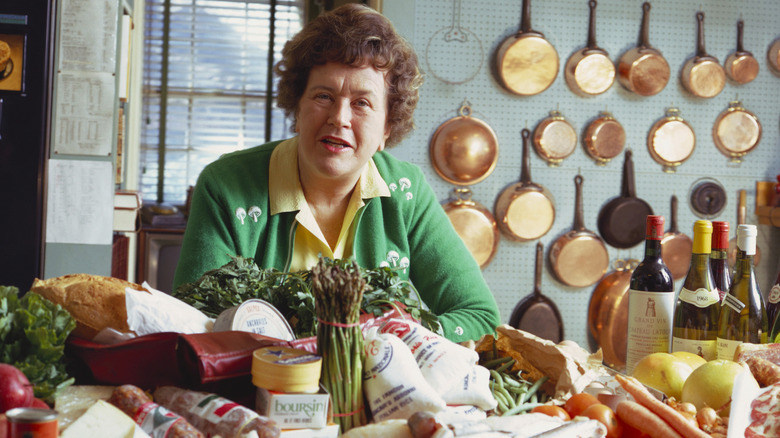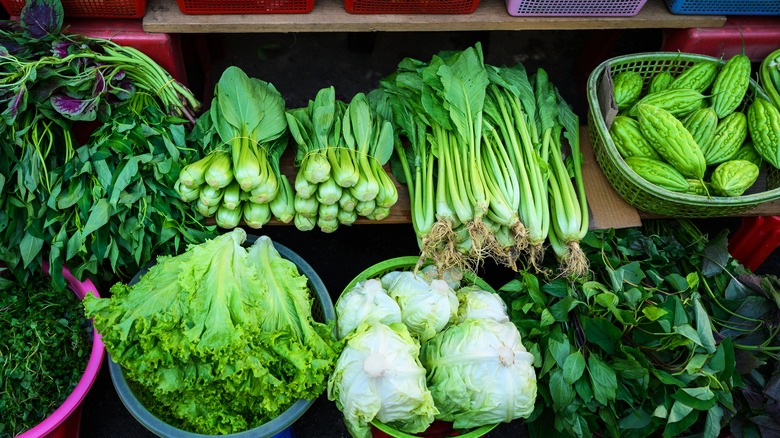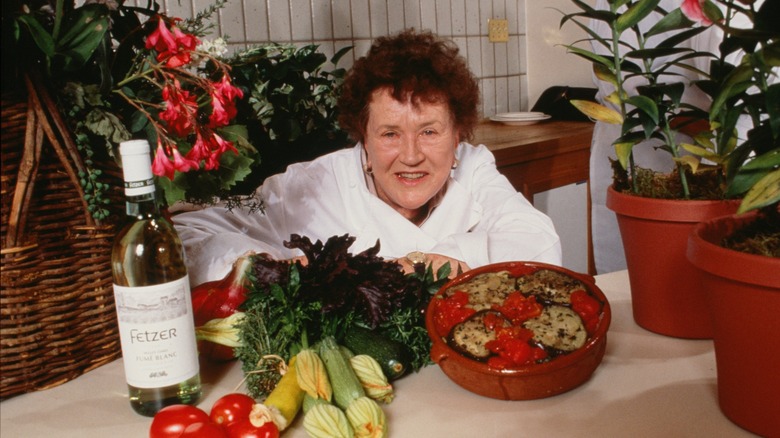Why Julia Child Didn't Use A List When Shopping At Farmers Markets
If there's one cooking principle Child believed in — besides using plenty of butter — it was to buy the freshest ingredients available. That meant going to the farmers market and choosing from produce that was recently plucked from a farmer's fields or meat direct from the local butcher. And when you're as committed to fresh ingredients as Child, from these, you buy what looks good. Her shopping "list" wasn't a premeditated accounting of all the things she planned to buy; it was an extemporaneous appreciation of what she saw.
While Child was more than well-equipped to tackle some of the hardest dishes to make from scratch, she believed that complexity did not necessarily equal greatness. In her words, "You don't have to cook fancy or complicated masterpieces — just good food from fresh ingredients."Thanks to her veritable arsenal of recipes, Child never suffered for lack of choice. Freshness was what her palate craved and, thanks to the depth of her culinary knowledge, freshness was what it got.
Child at the market
As a girl, Child spent many vacations in the southern California city of Santa Barbara, and even retired there in 2001 just three years before her death. Though she was surely nostalgic for her memories of the town, Child was blessed to reap the harvest of Southern California farmers as a cook. Whether it was a French market in the 1940s or a SoCal market in the early aughts, Child was more at home at a farmers market than a grocery store. With an equal abundance of options and curiosity, she regularly walked the length of a farmer's market before making a single purchase. After all, despite being a world-renowned cook, her pantry only had so much room, but it had no room for sub-standard ingredients.
Child at a farmer's market was like a kid at a candy store — impulsive and driven by what looks good. Like the brightness of a candy wrapper, the color of fresh produce drew her more than a desire to cook a specific dish. She let the seasons dictate what she cooked, whether it was squash in the fall or tomatoes in the summer, and refused to compromise by purchasing out-of-season, less-than-fresh produce.
The role of freshness in Child's recipes
The part of the story people know better is that Child spent a year studying cooking in France. What she soon understood to be axiomatic in French cooking is to not overcomplicate the dish. Given this, it comes as no surprise that the basis of so many of Child's recipes are excellence through simplicity. If you can't rely on overwrought presentation or the synergy of a dozen different ingredients, each step in a recipe becomes more important. So why not start with the freshest ingredients?
A no-bake Oreo cheesecake can lean on chocolate and sugar to cover for cream a day past its expiration date but a classic bacony succotash needs fresh corn, tomatoes, and beans to truly shine. With simple recipes, there's no room to hide. You can't cover up a bruised tomato or a dried out lime. Child believed that anyone can become an excellent chef with simple recipes and that fresh ingredients make simple recipes excellent. That means follow your senses when wandering markets, then plan from there.



